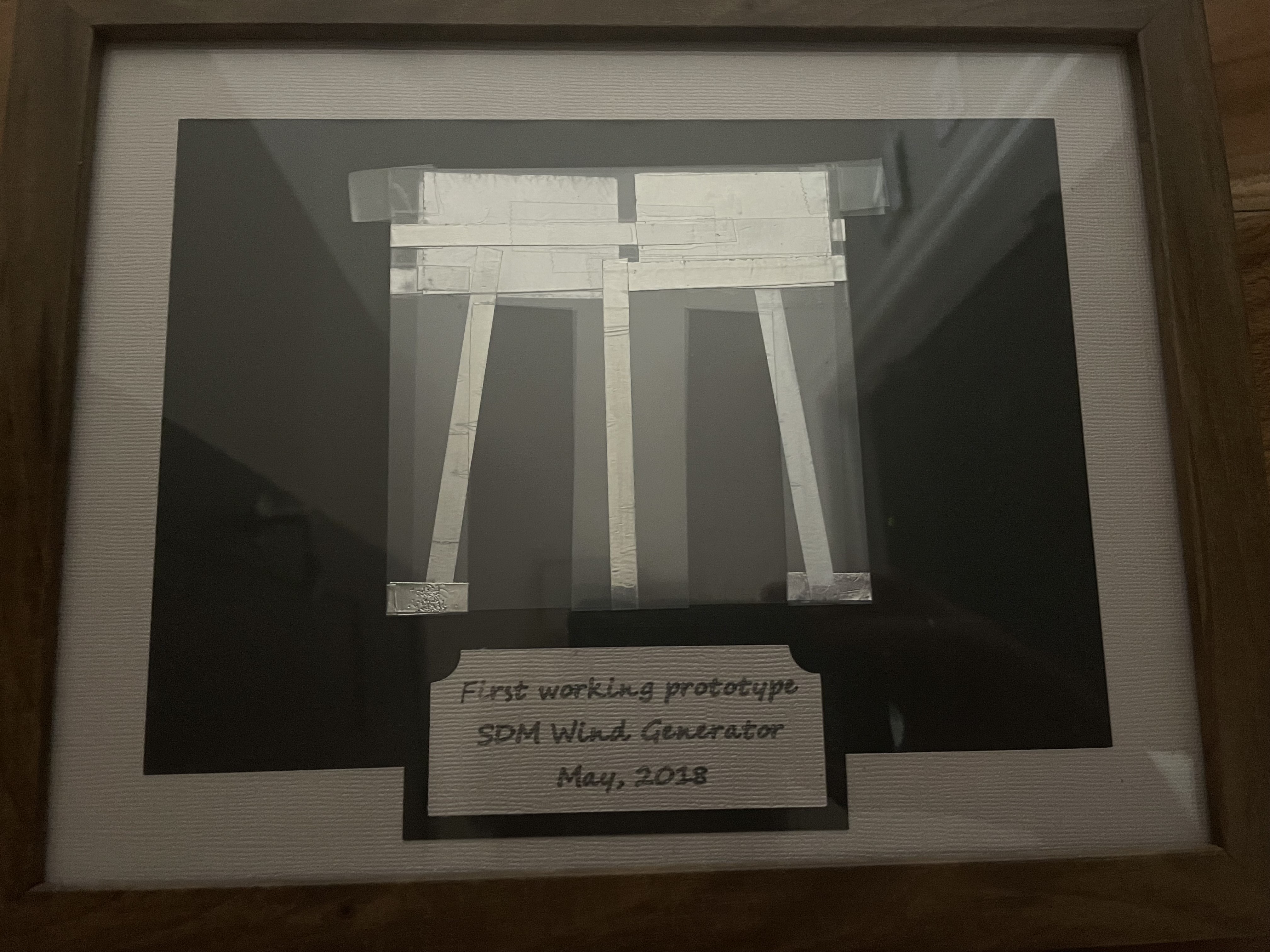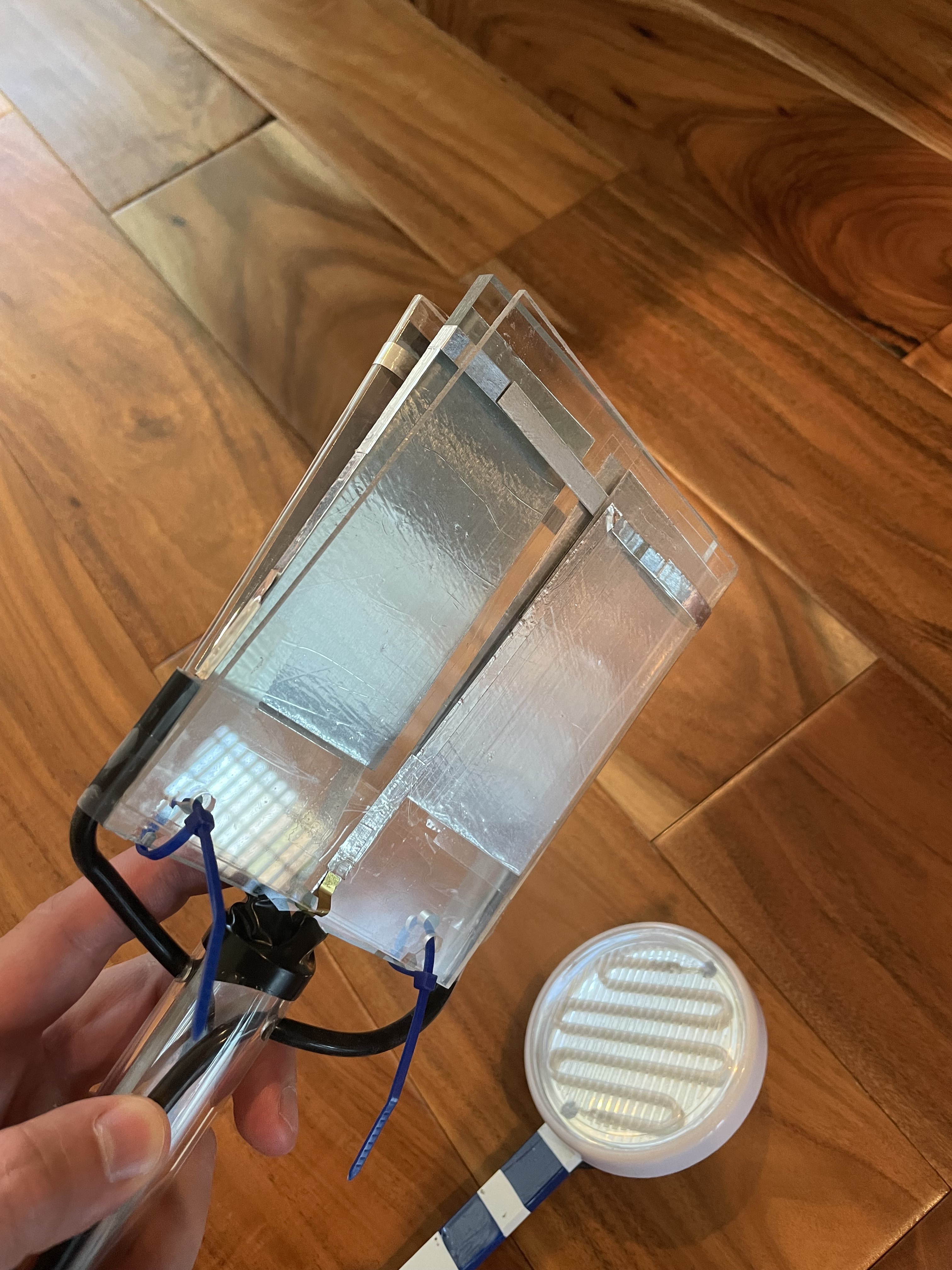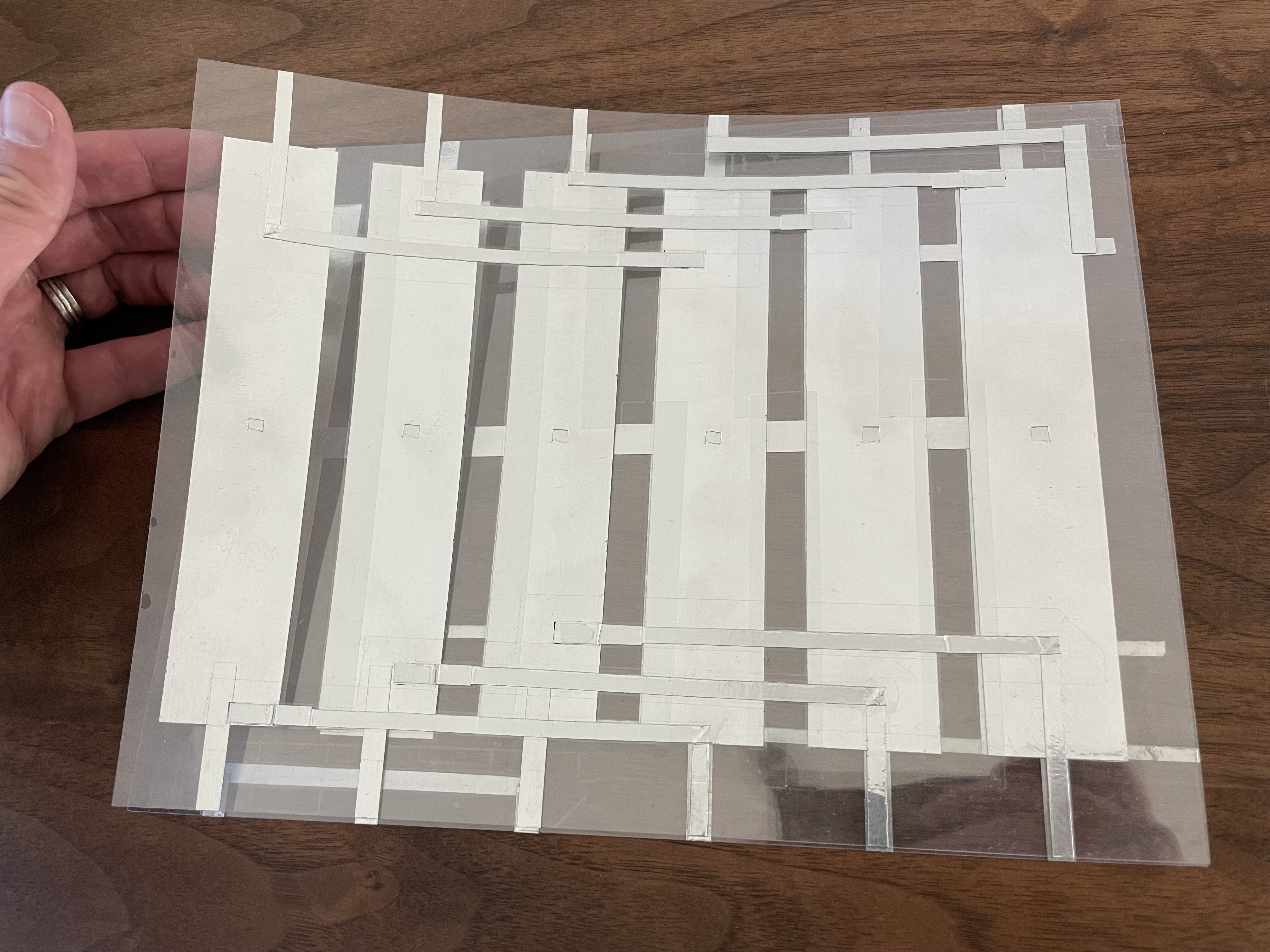-
FLAG Project History #3
10/14/2021 at 06:04 • 0 commentsIt was May 2018 when I had the first successful test of a FLAG, oscillating in the wind to power a light. Despite trying many different variations and circuits, you will notice the design still looks very similar to the original 4-sector 3-layer acrylic test shown in the last log.
In order to make the generator oscillate in the wind, I took a rectangular piece of polyester transparency, folded it in half, and cut out rectangular vent holes. A second piece of polyester goes inside the "V", and when held in the wind, the center film oscillates at a fairly high frequency. The center film covers one set of holes, causing the air to pass through the opposite holes, which essentially sucks the center film to the opposite site... over and over, at high speed.
The harvesting circuit and sectors stuck onto the film was made using ordinary aluminum foil tape, with the tips folded over wherever an electrical connection was needed. Alligator clips were connected from the bottom two connections to power a fluorescent light. The tabs of tape sticking out were what I used to hold it in the airflow from my "wind tunnel", and holding it relatively fixed like this makes the generator oscillate at much higher frequency. This is something I still wish to experiment with further, as the latest FLAG designs run at a much lower frequency. Generally speaking these sorts generators will theoretically make more power per unit volume at higher frequencies, with less travel, and more layers.
After all the effort in getting to this point, I had the first working FLAG framed.
![]()
The generator still had some problems to be sorted out. It still seemed to be sensitive to humidity, and the mechanical contacts were still unreliable. More to come in the following logs.
-
FLAG Project History #2
10/14/2021 at 05:57 • 0 commentsSometime around 2010, I unpacked a box and found what was still a sorry excuse for a wind generator. After a few years of thinking about it, I decided that it might have a better chance of working if the motion was simple reciprocation instead of the wave-like motion that was required in the previous iterations. I had an idea for something a little more basic, and just to try it out, I built a test out of 1/8" acrylic. This was a new 4-sector machine, with unique flat contact switching on it. Back and forth action causes the inner sectors to alternately approach the other sectors, and the switches connect the sectors to each other and ground in such a way that the charges double each cycle (though I don't think a true doubling is possible without a good connection to ground- in this case I think the charge multiplier theoretically approaches 1.62). After a minute or so of shaking the generator, the compact fluorescent light would blink with every shake. The wires were very well insulated with silicone fuel line tubing.
![]()
This was encouraging enough to bring the FLAG project back to life. I started making new generators out of thin films that were more similar to this acrylic test, and started experimenting with ways to make something like this reciprocate in the wind. Progress was very slow- now having 3 kids I would work on it whenever I had a little bit of spare time. I moved the blower I had been using from the previous experiments from my workplace into my garage for occasional wind tunnel testing.
-
FLAG Project History #1
10/14/2021 at 05:54 • 0 commentsThe idea for this project first started after seeing a demonstration of a Wimshurst machine, a type of rotary electrostatic machine known as an "influence machine". These machines use electric fields, not friction, to generate electricity. It might be easiest to think of these machines as charge copiers. Starting with whatever tiny charge imbalance there is between two conductive "sectors" when they are close together, the sectors are physically pulled apart from each other, causing the capacitance to decrease, and the voltage to increase. The higher voltage makes it possible to move the charges around, and with at least 3 sectors and by repeating the motion, there are switching operations that can be carried out that will copy the charges over and over, until the machine is operating at thousands of volts. A description of the design and operation of the Wimshurst machine can be found here: Wimshurst machine - Wikipedia, though the electrical circuit used on the latest FLAG prototypes is more similar to a machine called Wilson's Machine, or another one called Bennet's Doubler.
Virtually all the historical electrostatic influence machines were invented in the late 1800's or early 1900's, and the invention of today's common electromagnetic generator quickly made them obsolete. They were mostly made of glass, and since that time, plastic materials with superior electrical performance now existed.
I was very interested in wind energy, and it seemed to me like it might be straightforward to make a linearized version of the Wimshurst machine into a new sort of wind generator without many parts. I imagined this a little like unwrapping the two plates of a Wimshurst machine into straight lines, and that the two layers could flutter against each other in the wind in a wave-like motion to make electricity. I proceeded to make many, many failures, from approximately the years 2000-2005 before focusing on a family generators that looked like the one shown below. These were being made using polyester transparencies, and hardware store aluminum foil tape.
![]()
It has multiple sectors, cascading switches, and grounding on the inside in the center. The sectors naturally each charge to the opposite polarity of the adjacent sector, and a rythmic wave motion would cause the machine to accumulate charge, until crackling with arcs and the smell of ozone! The machine electrically worked very well if you were to make it move by hand (and it delivered some nasty shocks), but I eventually ran into a few problems that seemed insurmountable. As a separate effort, I was trying to get the required motion from two layers of film in moving air using a shop blower at my workplace. The two layer design had a rather weak and unreliable reciprocating motion, and the surface contacts would not work reliably like this. Electrically, this design also didn't work well in humidity, and it became obvious it would never make any electricity from the wind this way. At this point I was getting married, moving houses, and starting to have kids. The generator project was packed into a box and went to sleep for a few years...
Flexible circuit wind generator
A new way to generate wind energy using only polyester film based flexible circuits
 Stuart MacKenzie
Stuart MacKenzie

